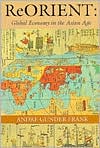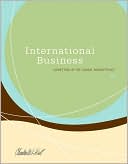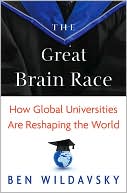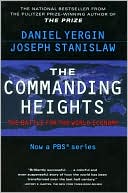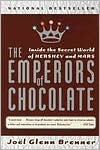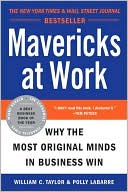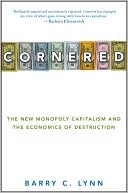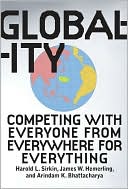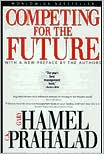ReORIENT: Global Economy in the Asian Age
Andre Gunder Frank asks us to ReOrient our views away from Eurocentrism—to see the rise of the West as a mere blip in what was, and is again becoming, an Asia-centered world.\ In a bold challenge to received historiography and social theory he turns on its head the world according to Marx, Weber, and other theorists, including Polanyi, Rostow, Braudel, and Wallerstein. Frank explains the Rise of the West in world economic and demographic terms that relate it in a single historical sweep to...
Search in google:
"Frank shows how Marx and Weber got it all wrong. A fundamental rethinking of the rise of the West and the origin of the world-system. Absolutely essential to understanding world history."—Albert Bergesen,University of Arizona "The great virtue of this stimulating book is its relentless push to redefine our framework for thinking about the early modern economy. . . . A benchmark study."—R. Bin Wong,University of California, Irvine Saubhik Chakabarti ReOrient's biggest virtue: it forces the reader to at least look differently at world history- This impressive and illuminating analysis 20 sets out to challenge the mother of all orthodoxies that Europe discovered capitalism and industrialisation and that what followed and is happening and will happen is essentially a fallout of this European preeminence. -- The Statesman
EPIGRAPHS PREFACE CHAPTER 1 INTRODUCTION TO REAL WORLD HISTORY VS. EUROCENTRIC SOCIAL THEORY HOLISTIC METHODOLOGY AND OBJECTIVES GLOBALISM, NOT EUROCENTRISM CHAPTER OUTLINE OF A GLOBAL ECONOMIC PERSPECTIVE ANTICIPATING AND CONFRONTING RESISTANCE AND OBSTACLES CHAPTER 2 THE GLOBAL TRADE CAROUSEL 1400-1800 AN INTRODUCTION TO THE WORLD ECONOMY Thirteenth and Fourteenth Century Antecedents The Columbian Exchange and its Consequences Some Neglected Features in the World Economy WORLD DIVISION OF LABOR AND BALANCES OF TRADE 1400-1800 Mapping the Global Economy The Americas Africa Europe West Asia The Ottoman Empire Safavid Persia India and the Indian Ocean North India Gujarat and Malabar Coromandel Bengal Southeast Asia Archipellago and Insular Continental Japan China Population, Production, Trade China in the World Economy Central Asia Russia and the Baltics A Sino-Centric World Economy Summary CHAPTER 3 MONEY WENT AROUND THE WORLD AND MADE THE WORLD GO ROUND WORLD MONEY: ITS PRODUCTION AND EXCHANGE Micro- and Marco- Attractions in the World Casino Dealing and Playing in the Casino The Numbers Game Silver Gold Credit HOW DID THE WINNERS USE THEIR MONEY? Spenders vs Hoarders Inflation or Production in the Quantity Theory of Money Money Expanded the Frontiers of Settlement and Production CHAPTER 4 THE GLOBAL ECONOMY: COMPARISONS AND RELATIONS QUANTITIES: POPULATION, PRODUCTION, PRODUCTIVITY, INCOME AND TRADE Population, Production and Income Productivity and Competitiveness World Trade 1400-1800 QUALITIES: SCIENCE AND TECHNOLOGY Eurocentrism Regarding Science and Technology in Asia Guns Ships Printing Textiles Metallurgy, Coal and Power Transport World Technological Development MECHANISMS: ECONOMIC AND FINANCIAL INSTITUTIONS European - Asian Comparisons Global Institutional Relations In India In China CHAPTER 5 HORIZONTALLY INTEGRATIVE MACROHISTORY SIMULTANEITY IS NO COINCIDENCE DOING HORIZONTALLY INTEGRATIVE MACROHISTORY Demographic/Structural Analysis A "Seventeenth Century Crisis"? Monetary Analysis and the Crises of 1640 Kondratieff Analysis The 1762-1790 Kondratieff "B" Phase Crisis and Recessions More Horizontally Integrative Macrohistory? CHAPTER 6 WHY DID THE WEST WIN [TEMPORARILY] ? UP AND DOWN THE LONG CYCLE ROLLICOASTER? THE DECLINE OF THE EAST PRECEDED THE RISE OF THE WEST The Decline in India The Decline Elsewhere in Asia HOW DID THE WEST RISE? Climbing Up on Asian Shoulders Supply and Demand for Technological Change in the World Economy Supplies and Sources of Capital A GLOBAL ECONOMIC/DEMOGRAPHIC ACCOUNTING FOR THE DECLINE OF THE EAST AND THE RISE OF THE WEST A Demographic Economic Model A High-Level Equilibrium Trap? The Evidence 1500-1750 The 1750 Inflection Past Conclusions and Future Implications CHAPTER 7 HISTORIOGRAPHIC CONCLUSIONS AND THEORETICAL IMPLICATIONS HISTORIOGRAPHIC CONCLUSIONS: THE EUROCENTRIC EMPEROR HAS NO CLOTHES 1. The Asiatic Mode of Production [AMP] 2. European Exceptionalism 3. A European World-System or a Global Economy? 4. 1500: Continuity or Break? 5. Capitalism? 6. Hegemony? 7. The Rise of the West and the Industrial Revolution 8. Empty Categories and Procustean Beds THEORETICAL IMPLICATIONS: THROUGH THE GLOBAL LOOKING GLASS 1. Holism vs. Partialism 2. Commonality/Similarity vs. Specificity/Difference 3. Continuity vs. Dis-continuities 4. Horizontal Integration vs. Vertical Separation 5. Cycles vs. Linearity 6. Agency vs. Structure 7. Europe in a World Economic Nutshell 8. Jihad vs. McWorld in the Anarchy of the Clash of Civilizations? REFERENCES CITED
\ Harbans MukhiaIf challenging received wisdom is a trademark, this book is written as the mother of all challenges. The immense power of the book rests on the ability to provoke and force one to rethink many facets of history that have been taken for granted for a long long time. -- Harbans Mukhia\ \ \ \ \ Saubhik ChakabartiReOrient's biggest virtue: it forces the reader to at least look differently at world history- This impressive and illuminating analysis 20 sets out to challenge the mother of all orthodoxies that Europe discovered capitalism and industrialisation and that what followed and is happening and will happen is essentially a fallout of this European preeminence. -- The Statesman\ \
